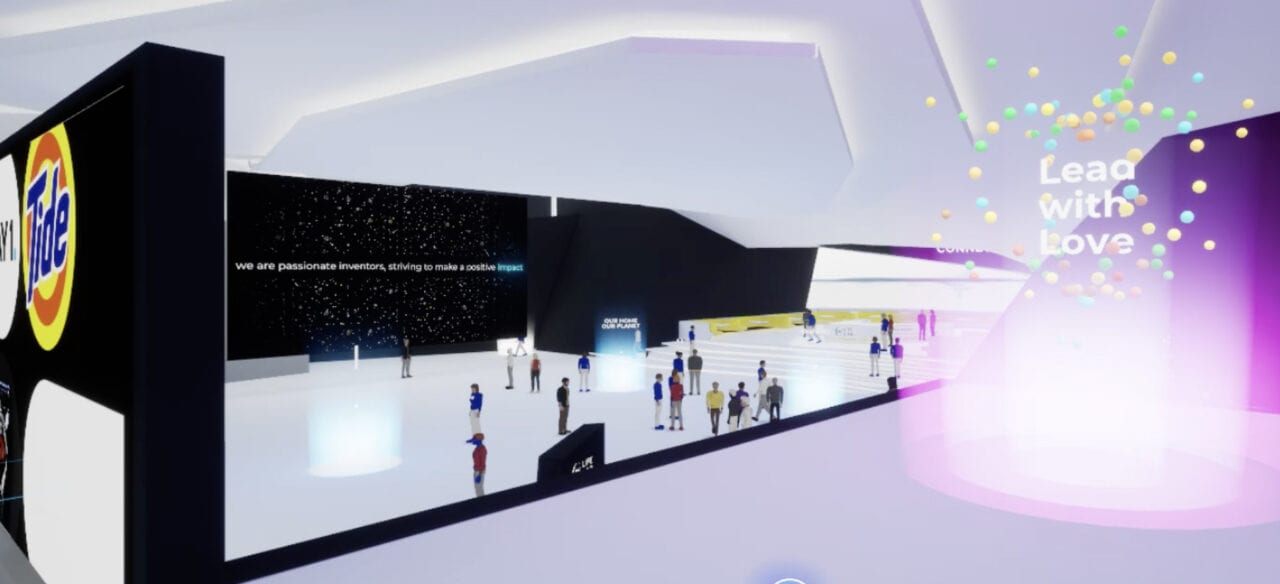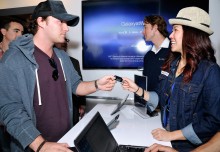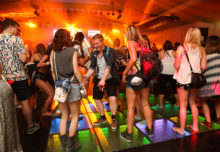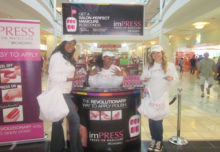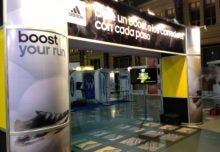As a “consumer-obsessed” brand, P&G had only joined the ranks of exhibiting brands at CES in 2019 when it stood up the LifeLab experience that offered multiple product spaces, hands-on demos and an amphitheater. When CES announced its 2021 pivot to digital, P&G saw opportunity—in not only keeping a foothold in the high-profile show, but in building a virtual platform that could live on and integrate with its consumer-facing experiences throughout the year.
Housed at pglifelab.com, the virtual P&G LifeLab was inspired by the in-person exhibit and offered six different product experiences visitors could explore in first-person view via their own custom avatars created in the platform. They could choose everything from skin color, to hair style and dress, and then voice chat and interact with other attendees and product experts inside the portal in real time.
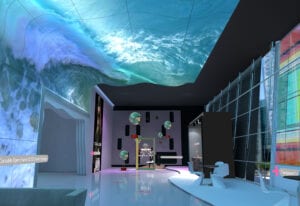 You might also like:
You might also like:
- How LG is Embracing the Future of Trade Shows with a Virtual Showroom
- Cadillac’s Global Director of Product Marketing on the Challenges of Virtual
The first step, however, was an “elevator ride” to the main lobby with an immersive look at the history of P&G since its founding in 1837 to set the tone for the experience. The view featured a virtual cascade of products, historical figures and documents.
“There are so few companies in the world who have the rich history of innovation as we do, but this space was also an opportunity for you, our guest, to understand the interactivity, to click on buttons, to move your avatar forward, make sure your microphone is working, so that by the time you landed on the LifeLab floor, you were ready to get going,” says Phil Duncan, chief design officer at P&G.
Additional portal features included the Connect with P&G Bar, which invited partners and entrepreneurs to share their latest ideas and inspirations with experts at P&G. Potential recruits interested in working at the company could explore opportunities by speaking to representatives of the company’s Talent Supply Organization at the Work with Us Bar.
In the P&G LifeLab Everyday amphitheater, the brand hosted its third Innovation Challenge where select, budding entrepreneurs pitched solutions for an opportunity to partner with P&G Ventures on product development. The amphitheater also housed demonstrations and content, like an exclusive screening of “How to Keep a Healthy Home” presented by Bounty, featuring recommendations from microbiologist Dr. Charles Gerba.
An Evolving Portal
While the LifeLab launched for CES attendees during show week, Jan. 11-14, the portal will reopen to other audiences as the brand aligns with events and rolls out marketing messaging and innovations throughout the year.
“It will live on with us in many other platforms that we now attend as a company, ranging from Davos to the Olympics, even campaigns like Earth Week, so we’re excited to not think about it as just a one-off investment, but something that’s going to be really vital as a tool to reach consumers with our message about our brands and our company’s commitment to innovation,” Duncan says.
As for results, P&G factors in the many nuances of this year’s show. The numbers were “different” in how many and from where the brand generated visitors, but the quality of engagement was just as high as the in-person show, “if not higher.”
“The length of time that people engaged with us exceeded the amount of time that people would rip through on a 10-minute tour of the floor at the in-person CES, so I think this combination experience is going to be really ideal in term of the digital and physical worlds coming together,” Duncan says. (Agency: P&G Design/In-house; Partners: BizLogic; Lightborne; Intervideo)
Top Tips for Activating in the Virtual Trade Show Space
1.) Think: Human connection.
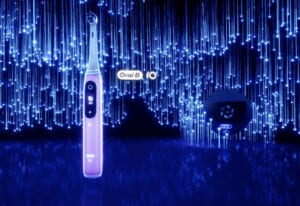
The Oral-B iO, with its sea of neon bristles, talked about modern features, reinventing the brush head and micro-vibrations. (Image credit: P&G)
The crowded corridors, foot traffic and shoulder bumps are part of an experience like CES, moments that are hard to replicate in the virtual world. The interactive avatar feature in the P&G LifeLab helped bring some of that back for attendees.
“People would first start talking to another avatar and ask if they’re a machine or a real person,” Duncan says. “I don’t think we understood the depth at which people would say, ‘Wow, that’s really cool,’ because they heard our accent, they saw our ethnic background, they saw our diversity, and they got to speak with the innovators who literally were part of creating what they were experiencing.”
2.) Adopt design principles based in gaming.
P&G struck a balance between the sensitives of a COVID-19 world, entertainment and key product messaging. But at the heart of the LifeLab experience was fun and exploration.
“We’ve realized that what people are doing in these virtual environments now is cherry picking the things that they want to do and then sandbagging the rest of it,” Duncan says. “We needed to make sure that the things they chose to engage in were entertaining. So that’s why this space had a lot of those design principles based in gaming interactivity—a little bit of fun and visual interest and the opportunity to talk directly with our people.”
3.) Embrace the storytelling possibilities.
The LifeLab experience allowed the team to lean into and enhance storytelling elements, as well as activate moments that would never be possible in the physical realm. And it all points to the possibilities of hybrid in combining high-tech storytelling with the in-person experience.
“We see this as being an enhancing aspect of what we call the ‘superior consumer experience’ with our brands, so matching up what we think is going to be a wonderful combination of this virtual environment that allows you to tell a unique story in a different way with the physical one, is going to be very powerful,” Duncan says. “We would not have built an environment like the Oral-B iO room in the real world, but boy, was it super stunning to explore as avatar; we would not have built a three-island navigating world to for our 50L Home Coalition complete with draining water, but we could do that in a virtual world.”


